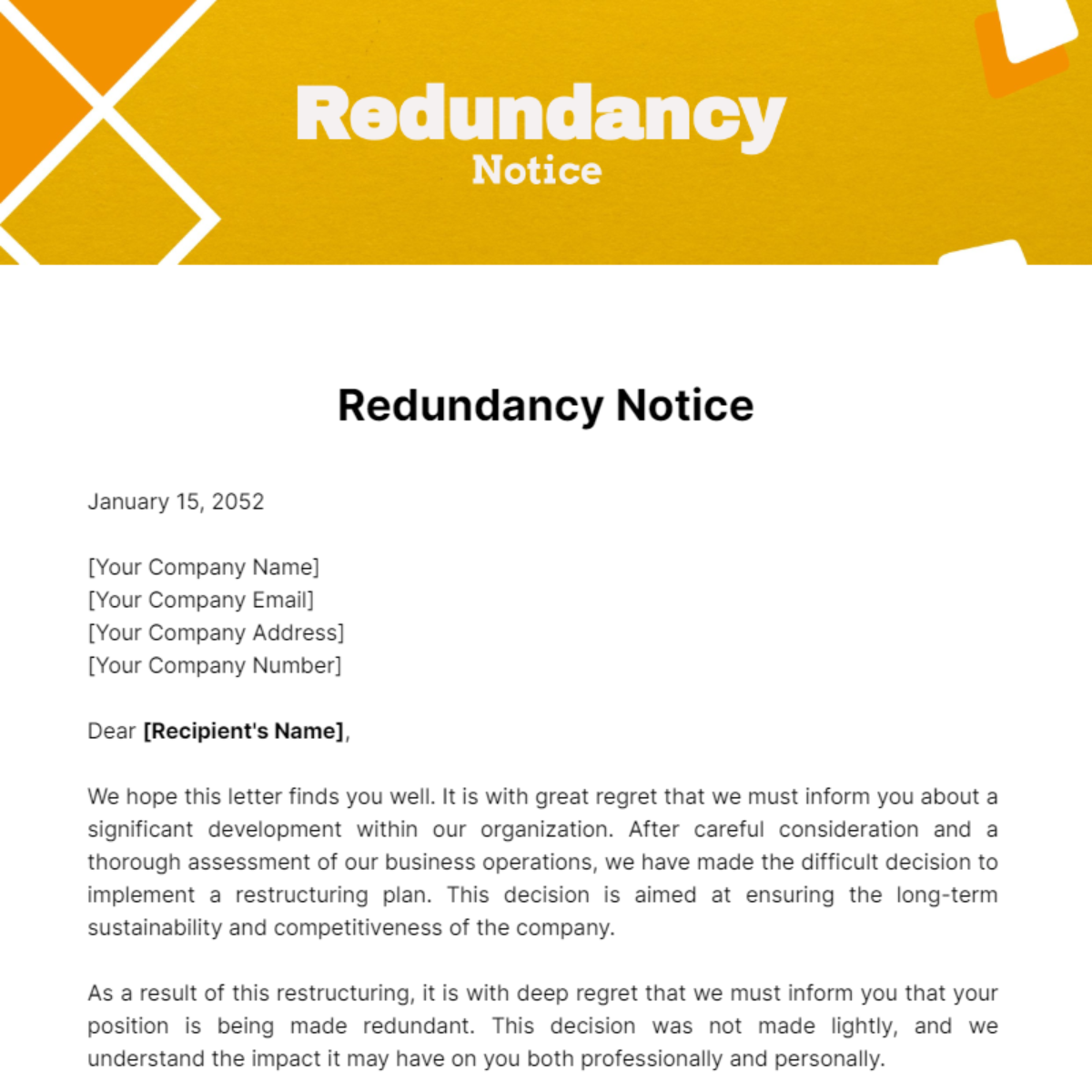Who Pays Redundancy Money? A Detailed Overview for Companies and Employees
Who Pays Redundancy Money? A Detailed Overview for Companies and Employees
Blog Article
Discovering the Operational Characteristics of Firm Redundancy and Its Long-Term Sustainability

Redundancy Approaches for Service Continuity
In order to make certain undisturbed procedures, businesses need to implement efficient redundancy approaches for business continuity. Redundancy in this context describes the replication of critical elements or features within a system to reduce the influence of potential failings. By integrating redundancy techniques, companies can improve their resilience versus interruptions created by different aspects such as natural calamities, devices failures, or cyber-attacks.
One usual redundancy approach is the application of backup systems and information storage remedies. This includes developing duplicates of crucial data and systems that can be triggered in instance of a primary system failing. Furthermore, organizations can establish redundant interaction networks and source of power to maintain connectivity and operations throughout unforeseen occasions.
Additionally, cross-training staff members to do multiple functions within the company can function as a useful redundancy method. If crucial employees are not available due to disease or various other factors, this guarantees that vital tasks can still be carried out also. In general, effective redundancy strategies are crucial for organizations to copyright functional connection and reduce the effect of potential disruptions.
Effect of Redundancy on Business Resilience
Given the essential function redundancy strategies play in guaranteeing business continuity, checking out the impact of redundancy on business durability becomes crucial for comprehending the alternative functional dynamics of a company. Business strength describes an entity's capacity to adjust to disruptions, recoup from setbacks, and transform when necessary while keeping core functions. Redundancy, when tactically executed, can significantly contribute to boosting a company's strength in the face of unanticipated challenges. By having backup systems, workers, or procedures in position, business can much better withstand shocks and continue procedures with minimal interruption.
In addition, redundancy can reinforce employee morale and self-confidence, knowing that there are contingency strategies in location to attend to unexpected scenarios. This feeling of safety can result in enhanced efficiency and a much more positive work setting. Furthermore, redundancy can promote development and creativity within an organization as staff members feel empowered to take calculated risks, understanding that there is a safeguard to sustain them in case of failure. In general, the impact of redundancy on business strength is extensive, forming the lasting sustainability and success of a company.
Balancing Effectiveness and Versatility in Redundancy
Accomplishing a harmonious equilibrium between functional performance and adaptive flexibility is a pivotal difficulty in the critical deployment of redundancy within organizations. Too much versatility without a strong functional structure can result in inadequacies and disparity.
To stabilize efficiency and versatility in redundancy preparation, companies have to carefully examine their operational needs, market characteristics, and critical goals. find out Carrying out lean techniques can boost efficiency by streamlining procedures and getting rid of waste, while cultivating a society of adaptability and continual enhancement can boost flexibility. Additionally, investing in cross-training programs and robust communication channels can assist grow a flexible labor force with the ability of handling diverse jobs throughout periods of change. Inevitably, locating the best stability between effectiveness and versatility is critical for building a resistant and sustainable organization when faced with unpredictability.
Long-Term Sustainability With Redundancy Planning
To make certain enduring viability and security, organizations have to strategically straighten their redundancy preparation with long-lasting sustainability goals, thereby harmonizing operational effectiveness with flexible flexibility. Long-term sustainability with redundancy preparation entails greater than just temporary cost-cutting steps. It calls for a comprehensive strategic technique that expects future obstacles and possibilities. Firms should view redundancy not as a reactive service to instant issues however as a proactive method for long-term success. By incorporating redundancy planning with sustainability purposes, organizations can create a resilient framework that can hold up against different market variations and interior changes.

Aggressive Actions for Sustainable Business Workflow
How can firms proactively enhance their operational sustainability for long-term success? Carrying out aggressive actions is important for business intending to ensure sustainable procedures.
Furthermore, fostering a culture of constant renovation and knowing within the organization can enhance flexibility to altering market conditions and customer demands. Urging employee involvement in decision-making procedures and giving chances for professional development can enhance discover here morale, productivity, and total efficiency. Establishing clear goals, keeping track of essential performance indications, and regularly evaluating progress are vital parts of proactive sustainability management.
Working together with vendors, customers, and other stakeholders to promote sustainable practices throughout the supply chain can produce a causal sequence of favorable effect - redundancy pay if company goes bust. By taking aggressive steps in the direction of operational sustainability, firms can build strength, drive development, and safeguard their long-lasting success in an ever-evolving organization landscape
Final Thought

In the world of business administration, the calculated deployment of firm redundancy stands as a critical yet intricate practice that requires a fragile balance in between operational performance and long-lasting viability. By studying the operational characteristics that underpin business redundancy and reviewing its wider implications for business resilience and adaptability, a nuanced understanding of exactly how redundancy strategies can form the future trajectory of a company starts to unfold.Offered the essential function redundancy strategies play in making certain service connection, discovering the impact of redundancy on organizational strength comes to be critical for understanding the alternative functional dynamics of a company. Generally, the impact of redundancy on organizational strength is extensive, shaping the long-term sustainability and success of a firm.
In final thought, comprehending the operational dynamics of firm redundancy is vital for making certain long-lasting sustainability.
Report this page